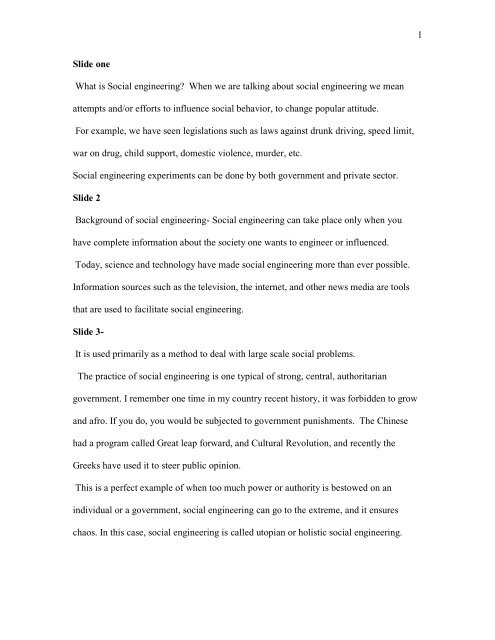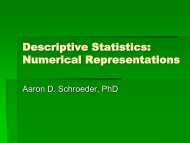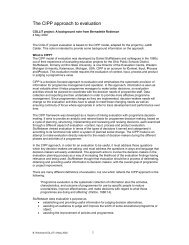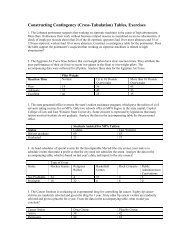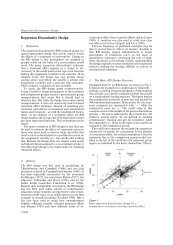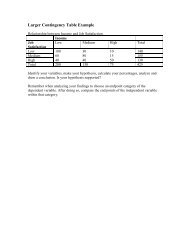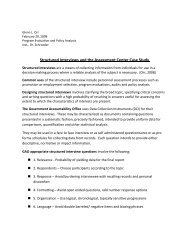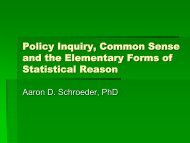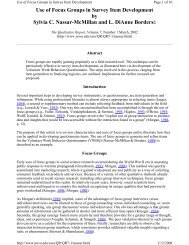Piecemeal Social Engineering (Isny Joseph).pdf
Piecemeal Social Engineering (Isny Joseph).pdf
Piecemeal Social Engineering (Isny Joseph).pdf
You also want an ePaper? Increase the reach of your titles
YUMPU automatically turns print PDFs into web optimized ePapers that Google loves.
1<br />
Slide one<br />
What is <strong>Social</strong> engineering? When we are talking about social engineering we mean<br />
attempts and/or efforts to influence social behavior, to change popular attitude.<br />
For example, we have seen legislations such as laws against drunk driving, speed limit,<br />
war on drug, child support, domestic violence, murder, etc.<br />
<strong>Social</strong> engineering experiments can be done by both government and private sector.<br />
Slide 2<br />
Background of social engineering- <strong>Social</strong> engineering can take place only when you<br />
have complete information about the society one wants to engineer or influenced.<br />
Today, science and technology have made social engineering more than ever possible.<br />
Information sources such as the television, the internet, and other news media are tools<br />
that are used to facilitate social engineering.<br />
Slide 3-<br />
It is used primarily as a method to deal with large scale social problems.<br />
The practice of social engineering is one typical of strong, central, authoritarian<br />
government. I remember one time in my country recent history, it was forbidden to grow<br />
and afro. If you do, you would be subjected to government punishments. The Chinese<br />
had a program called Great leap forward, and Cultural Revolution, and recently the<br />
Greeks have used it to steer public opinion.<br />
This is a perfect example of when too much power or authority is bestowed on an<br />
individual or a government, social engineering can go to the extreme, and it ensures<br />
chaos. In this case, social engineering is called utopian or holistic social engineering.
2<br />
Slide 6- Utopian or holistic social engineering had its most forceful critique in Karl<br />
Popper who argued that utopian social engineering produces more harms than good, and<br />
proposed a more practical, a more democratic form of social engineering that he labeled<br />
“<strong>Piecemeal</strong> <strong>Social</strong> <strong>Engineering</strong>.<br />
Popper made an enormous contribution to the philosophy of science. For the interest of<br />
time, we will not discuss his life and contribution. We are only interested today in<br />
piecemeal social engineering.<br />
At the start, Popper made the compelling argument that piecemeal social engineering is<br />
the policy approach appropriate to decentralized political systems, whereas holistic, large<br />
scale approach to change is the signature of centralized systems.<br />
Slide 7 Look for falsification and verificationism.<br />
Usefulness- In introduction of ideas for modest change to address specific problems and<br />
to deal with their consequences. Propose small scale interventions to deal with harms, to<br />
see whether they are producing their intended effects, to see if they produce unwanted or<br />
unintended side effects.<br />
Use trial and error learning to refine intervention. <strong>Social</strong> science was to conduct research<br />
to check out theories built in small scale, well targeted reforms. Only then that policy can<br />
produce social benefits (maximum utilities- social ills).<br />
Slide 8- The essence of piecemeal social engineering is guarded by the theory of<br />
falsification. Scientific theories can only be falsified, tested. This is in complete contrast<br />
with the positivist approach or verificationism (will be discussed later). Falsification<br />
requires that you make many attempts to refute a theory. When you do so, you increase<br />
your confidence in the theory.
3<br />
Replacement: A theory must be replaced by a better theory. Analysts must accept and<br />
act on the best available theory, the one that passed the most rigorous falsification<br />
attempts. After all, social science are developed through attempts to find out whether or<br />
nor a particular economic or political action is likely to produce an expected result.<br />
Popper argued that the essence of human activity is problem solving. The problem<br />
solving formula is p1 ts ee p2…. where:<br />
P1 represents an initial problem, ts is the trial solution to that problem, ee is the error<br />
elimination (by empirical tests), and p2 is the sets of problems remaining after error<br />
elimination.<br />
We can apply this test to a real public policy problem. The gas price is a major concern<br />
for some in major parts of the countries (p1). We can come with a trial solution (ts) to<br />
help alleviate the burden by providing free transportation at a specific time and place.<br />
(ee) error elimination is the field test of that approach, and p2 is the residue of the initial<br />
problem and any side effects ( people may feel they do not want to abide by the time,<br />
they may feel the pick up and drop off locations are not feasible to them. Or the effects<br />
of the policy can adversely affect the economy.<br />
Slide 9- Policy field exponents.<br />
For piecemealists, social experimentation is the proper basis for rational public policy<br />
for the simple reason that information to improve social services or programs<br />
effectiveness is impossible to obtain. Thus, piecemeal social engineering has been used as<br />
a means for social experimentation in policy areas such as social welfare, education,<br />
health, law enforcement, labor and human resources, among others. When social<br />
experimentation is done, if possible, use a treatment group and a demographically
4<br />
identical control group. Randomly assign individuals between the two groups to ensure<br />
their identity. If control group experimentation is not feasible, piecemealists will use a<br />
quasi-experimental method.<br />
If experimentation produces clear positive results, repeat on a larger scale. If produced no<br />
clear or negative results, try again with a different or refined tentative theory.<br />
Slide 10 –Application to frames<br />
When I say hostility to frames, I do not imply a categorical rejection of frames. I simply<br />
mean that piecemeal social engineering will work with some frames only for their<br />
heuristic utility (that is if only they help solve a problem). For example:<br />
Public Choice - <strong>Piecemeal</strong> social engineering will not work well with public choice<br />
because of its close relationship with the positivist all or nothing approach to public<br />
policy. The open society, the reform administrator ideal of piecemeal social engineering<br />
promotes criticism, and believes that ideas must come from all the stakeholders,<br />
particularly the affected population, whereas positivism believes that only expects, and<br />
analysts can have a say. The public choice association with this kind of courant makes it<br />
completely incompatible with piecemeal social engineering.<br />
Welfare Economy- ???<br />
<strong>Social</strong> structure- As you have heard from Gleen, the social structure frame entails many<br />
groups and individuals that are interested in social practices. The audience for social<br />
structure is large and diverse. With many interests to cater to, the likelihood for instability<br />
is intensified, conflicts and controversy can emerge. Therefore, social structure as a frame<br />
is not fit to work with the piecemeal social engineering approach.
5<br />
Information Processing – You have also heard two different approaches to information<br />
processing in policy analysis. The pessimistic application sees a complex process.<br />
Adherents of this school are skeptic about information validity, and hence, they argue<br />
that analysts must only address policy alternatives that score some chance of acceptance.<br />
The optimist camp seeks to identify an ideal policy process and a means for its<br />
attainment. Both are seeking to facilitate intelligent action in a world of perfect<br />
information. As such, they are both compatible with piecemeal social engineering.<br />
Political Philosophy- Political philosophy believes in values systems, and values<br />
political institutions. By trial and tests, these values and institutions can be understood in<br />
evolutionary terms as the products of proposals and criticisms. <strong>Piecemeal</strong> social<br />
engineering would be, and in fact, is sympathetic to political philosophy as a frame.<br />
Slide 11- Contrast<br />
Positivists are confident in recommending large scale policy action on the basis of their<br />
theories, once they have been confirmed. Conversely, <strong>Piecemeal</strong>ists would recommend<br />
some cautious and moderate actions. Take the policy of the education policy of force<br />
busing, positivists acted, and then admitted that the theory was not tested. A piecemeal<br />
social engineer would test force busing by moderate application before recommending it<br />
on a large scale.<br />
Positivists believe only expects have an understanding and knowledge about public<br />
policy, and therefore, policy analysis and policy making should be left to technocrats,<br />
and experts. They admit no criticisms, considered as trapped administrators.
6<br />
On the other hand, piecemeal social engineering advocates for the open society, gives no<br />
legitimacy to experts. Criticisms and proposals are welcome from all sources: policy<br />
makers, analysts, and the affected citizenry.<br />
Slide 12<br />
Similarities: both positivism and piecemeal social engineering believe that causal laws of<br />
society can be discovered that are invariant across time.<br />
The time required before passing judgment on a social experiment can be long and<br />
difficult. And because feedback from social experimentation will not come fast enough,<br />
both positivism and piecemeal social engineering are helpless in the face of rapid social<br />
change.<br />
Slide 13<br />
No theory or approach is immune to criticism. Some characteristics of the piecemeal<br />
social engineering approach make it permeable to criticism. For example, decomposition<br />
is an inherent peculiarity of piecemeal social engineering. <strong>Piecemeal</strong>ists want that social<br />
problems be decomposed into their component parts, and be resolved in isolation. And,<br />
albeit the argument of Simon that most social problems are at least near decomposable,<br />
and amenable to treatments in such terms; our complex environment or complex systems<br />
can not be broken into sub-parts.<br />
Complexity is yet another aspect where piecemeal social engineering is severely<br />
criticized. Because of complexity, it is difficult to control all the variables.<br />
Premature evaluation is another weakness of piecemeal social engineering. A program<br />
may require a level of resources and time to produce the desired results. A piecemeal<br />
social experiment will yield no indication of success. Thus, premature evaluation can<br />
unfairly destroy a program or deny it the time and the necessitated resources it needed to<br />
bring results.


